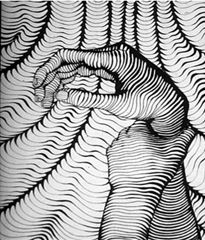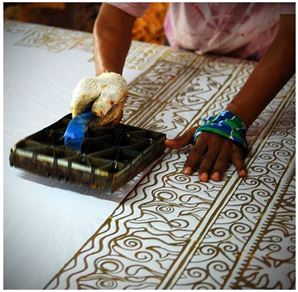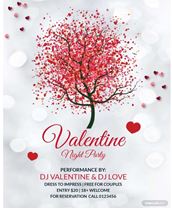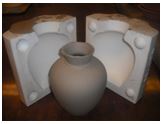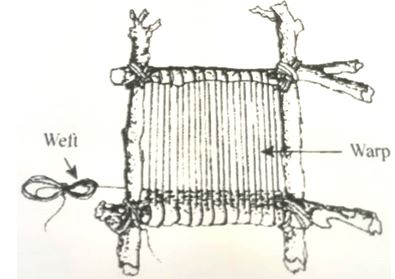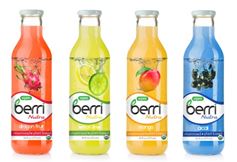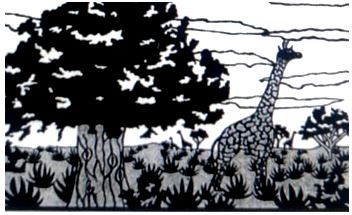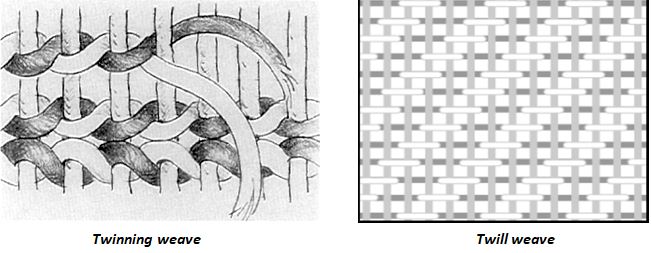Questions
Instructions to candidates
- This paper consists of three sections A, B and C.
- Answer all questions in section A and B.
- Answer any one question in section C
- Candidates should answer the questions in English
SECTION A (20 marks)
Answer all the questions in this section in the spaces provided.
-
- Study the illustration below.
Identify the main two uses of line in the above illustration (2marks) - Distinguish between visual arts and performing arts. (2marks)
- Define the term ‘sketching’ (1mark)
- Give the functional similarity between strings and wax in fabric decoration (1mark)
- Name the two techniques used to mount pictorial compositions in art (2marks)
- Study the illustration below.
-
- The tool illustrated below is used in batik technique of fabric decoration
Identify the tool and state its function (2marks) - Explain the effect of modeling a huge papier mache sculpture without an armature (2marks)
- Define fresco painting (2marks)
- State any two factors to consider when developing a mural painting (2marks)
- Define lithography (2marks)
- Distinguish between ornaments and ornamentation (2marks)
- The tool illustrated below is used in batik technique of fabric decoration
SECTION B (25 marks)
Answer all the questions in this section in the spaces provided.
- Study the poster below and state five components of graphic design that make the poster to communicate effectively (5marks)
- Below is an illustration showing a certain process in art, study it carefully and answer the questions that follow.
- Name the above illustrated process. (1mark)
- State the material and equipment used in the process. (2marks)
- Give two advantages of using the above technique over the others. (2marks)
- Study the equipment below and answer the questions that follow
- Identify the equipment (1mark)
- In the space below explain with aid of illustrations, the difference between twinning and twilling (4marks)
- In the space below, make a quick sketch of a well-positioned athlete ready to start a race. (5marks)
- Study the package design and answer the questions that follow
- Give any two functions of packaging design. (2marks)
- Analyze the package designs with reference to
- Color (1mark)
- Layout (1mark)
- Lettering (1mark)
SECTION C (15 marks)
Answer any one question in the spaces provided after question 9.
-
- Distinguish between a curved and a constructed sculpture. (4marks)
- Identify five factors to consider in placement of sculptures (5marks)
- Identify three qualities and three limitations of working with stone as a material for sculpture. (6marks)
- Below are three steps illustrated for a certain art printing process.
- Name and define the above technique of printing. (2marks)
- Name and explain the process followed in each of the above stages.
- Stage X (5marks)
- Stage Y (4marks)
- Stage Z (4marks)
- Study the composition below.
Describe how the following pictorial features have been portrayed.- Lines
- Forms
- Pattern
- Depth
- Mood
Marking Scheme
-
- Study the illustration below.
Identify the main two uses of line in the above illustration (2marks)- To enclose shape
- To define form
- Suggest depth
- Distinguish between visual arts and performing arts. (2marks)
- Visual art refers to art that is tangible and that utilizes a variety of tools and materials to create or express 2D/3D forms for aesthetics or utilitarian purpose, whereas performing arts are the arts that involve individual/group performance to a given audience.
- Define the term ‘sketching’ (1mark)
- A rapidly executed freehand drawing done to capture basic details that are of interest to the artist
- Give the functional similarity between strings and wax in fabric decoration (1mark)
- Both are used to resist dye from penetrating the fabric so as to achieve decorative effects
- Name the two techniques used to mount pictorial compositions in art (2marks)
- Mat mounting
- Window mounting
- The tool illustrated below is used in batik technique of fabric decoration
Identify the tool and state its function (2marks)- Tjap tool
- Used to stamp designs on the fabric using hot wax in batik
- Explain the effect of modeling a huge peppier mache sculpture without an armature (2marks)
- Define fresco painting (2marks)
- It’s a technique of painting executed upon freshly laid lime plaster after which the painting becomes an integral part of the wall upon setting
- State any two factors to consider when developing a mural painting (2marks)
- Theme/function/purpose
- Location
- Target audience
- Nature of surface
- Define lithography (2marks)
- The process of transferring an impression using a flat surface achieved by using the concept that oil and water do not mix where the printing plate is coated to repel ink in some parts to create an impression.
- Distinguish between ornaments and ornamentation (2marks)
- Ornaments are objects that enhance the appearance of a person or an object or environment.
- Define fresco painting (2marks)
- Study the illustration below.
- Study the poster below and state five components of graphic design that make the poster to communicate effectively (5marks)
- Appropriate illustration
- Suitability of color to set the mood
- Simple and appropriate typography
- Good use of contrast to achieve dominance
- Pleasant layout that is not congested thus pleasing to look at.
- Use of illustration and types that communicate the same message.
- Below is an illustration showing a certain process in art, study it carefully and answer the questions that follow.
- Name the above illustrated process. (1mark)
- Casting/moulding
- State the material and equipment used in the process. (2marks)
- Slip
- Two.piece plaster Moulds
- Give two advantages of using the above technique over the others. (2marks)
- Produces several identical pieces
- Efficient in the production process
- Name the above illustrated process. (1mark)
- Study the equipment below and answer the questions that follow
- Identify the equipment (1mark)
- Dowel loom
- In the space below explain with aid of illustrations, the difference between twinning and twilling (4marks)
- Identify the equipment (1mark)
- In the space below, make a quick sketch of a well-positioned athlete ready to start a race. (5marks)
Award marks for- Good proportions
- Described posture
- Mood expressed
- Study the package design and answer the questions that follow
- Give any two functions of packaging design. (2marks)
- Containing and holding the product
- Protecting the product from damage
- Informing the customer about the product
- Creating brand identity to promote and help market the product.
- Analyze the above package designs with reference to
- Color (1mark)
- Eye catching and bold colors
- Color has been used uniquely according to each drink flavor
- Lettering color is consistent across all the different flavours
- Illustrations used influence the use of specific colors
- Layout (1mark)
- There’s vertical layout used in arrangement of characters
- There’s spacious placement of illustrations and types thus creating a balanced layout that is pleasing.
- There’s no congestion of characters.
- Lettering (1mark)
- Simple design of types
- Well spaced types thus enhanced readability
- Bold types thus enhanced legibility
- Correct placement of types at the centre of the design
- Color (1mark)
- Give any two functions of packaging design. (2marks)
-
- Distinguish between a curved and a constructed sculpture. (4marks)
- In curved sculptures, relatively hard materials are used while constructed sculptures can be made by a combination of different types of materials
- Curved sculptures are continuous with no joints whereas constructed sculptures have several joints where materials are joined.
- Constructed sculpture is fragmented compared to curved which is more compact and whole
- Curving engages a subtractive process whereas construction employs an additive process.
- In curving, one block of material is used while a constructed sculpture employs use of several pieces that are joined.
- Identify five factors to consider in placement of sculptures (5marks)
- Purpose and theme of the sculpture
- Type of material used to make the sculpture
- Type of sculpture
- The size of the sculpture
- Type of audience
- Identify three qualities and three limitations of working with stone as a material for sculpture. (6marks)
- Qualities
- Available in different and visually appealing colors
- Readily available in different sizes
- Can allow a wide variety of tools
- Very durable and can withstand harsh weather conditions
- Can allow a number of finishing technique
- Limitations
- Stones are too bulky thus posing difficulty in transportation from source to site
- Stones are brittle thus only suitable for closed up forms that don’t have elongated extensions
- Limited to the subtraction process
- Qualities
- Distinguish between a curved and a constructed sculpture. (4marks)
- Below are three steps illustrated for a certain art printing process.
- Name and define the above technique of printing. (2marks)
- Block printing/ relief printing
- The process of transferring an impression to another surface using a raised surface.
- Name and explain the process followed in each of the above stages.
- Stage X (5marks)
- Inking the roller
- At this stage, ink is scooped and smeared and spread on an ink slab
- Using a spatula,the ink is spread on the ink slab.
- A roller is then rolled through the ink severally so as to achieve an even layer of ink on it.
- Stage Y (4marks)
- Inking the printing block
- In this stage, the inked roller is rolled over the curved printing block
- Pick more ink from the slab using the roller and apply on the block evenly
- Pass the roller over the block surface in different direction to ensure even application of the printing ink.
- Stage Z (4marks)
- Transfer of impression
- At this stage, the block is inked and ready to transfer the impression.
- Take the working surface and lay it over the printing block.
- Using a wooden spoon, press against the back of the working surface in circular motion to ensure complete transfer of the inked impression on the working surface.
- Before removing the working surface from the block, hold it down and check whether the transfer is successful.
- Separate the two surfaces and give the impression time to dry.
- Stage X (5marks)
- Name and define the above technique of printing. (2marks)
- Study the composition below.
Describe how the following pictorial features have been portrayed.- Lines
- Lines have been used to outline shapes
- Lines have been used to define forms in the composition.
- Lines have also been used to create implied textures on forms e.g on the giraffe and the tree stem
- Forms
- A number of forms have been used to create the composition, these include
- The vegetation
- The giraffes
- The trees
- The clouds in the sky
- Pattern
- In the composition, there’s an exhibition of patterns on the giraffe and the shrub-like vegetation thus creating a rhythmic impression in the composition
- Depth
- Depth effect has been portrayed in the composition through
- Overlap of shapes
- Linear perspective where by there’s size reduction of forms that seem to be far from the foreground
- Mood
- There’s a calm and peaceful mood portrayed in the composition, depicted by the calm weather and the gracious giraffes that gracing .
- Lines
Download Art and Design Paper 1 Questions and Answers - KCSE 2021 Westlands Mock Exams.
Tap Here to Download for 50/-
Get on WhatsApp for 50/-
Why download?
- ✔ To read offline at any time.
- ✔ To Print at your convenience
- ✔ Share Easily with Friends / Students

